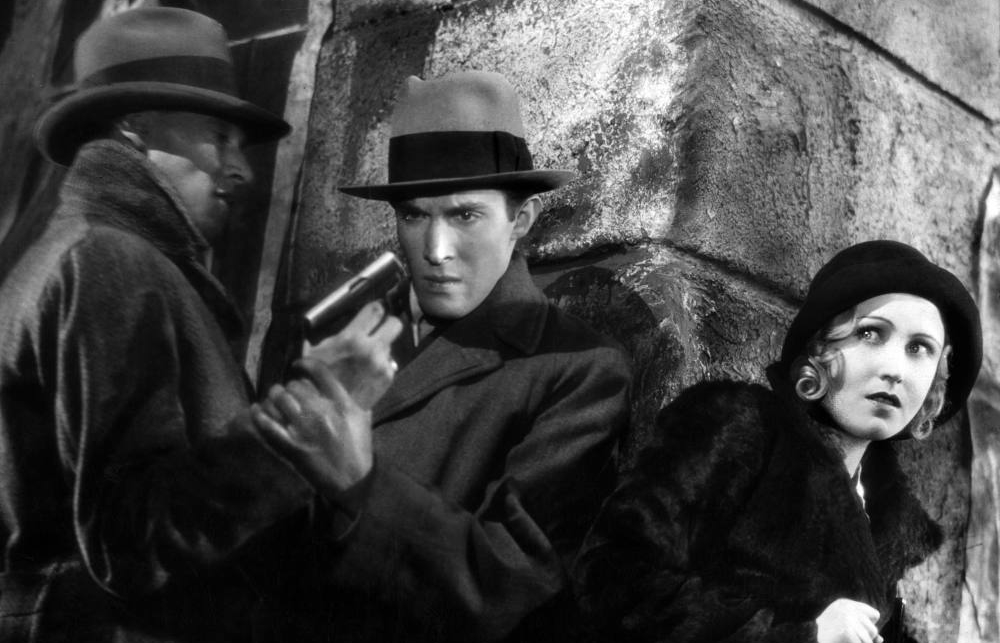Augusto Genina: an Italian in Europe

Programme curated by Emiliano Morreale
Notes by Paola Cristalli, Stella Dagna, Gian Luca Farinelli, Daniele Furlati, Claudia Gianetto ed Emiliano Morreale
Augusto Genina is one of the least studied of Italian cinema’s important directors. A single, albeit splendid, monograph edited by Sergio Germani and Vittorio Martinelli twenty-eight years ago is practically the only book dedicated to his work. The reasons behind this neglect are above all ideological. In the sound era, Genina’s name was linked to several war films of the Fascist era, a biography of the saint Maria Goretti, a melodrama underpinned by a rich Catholicism, and a film based on a news event which has an official Neorealist work as a rival – De Santis’ Roma ore 11.
However, Genina’s career is full of surprises. He traversed forty years of Italian and European cinema; indeed the cosmopolitan aspect of his work is one of its most evident traits. He exemplifies an international style – European in nature but also closely linked to the already well-defined model of American cinema. In his early years, Genina met the most important figures of the new industrial culture, from Lucio D’Ambra to Maurice Dekobra, and from the legendary Mistinguett to Pirandello, before being welcomed in both France and Germany.
Emerging in a period characterised by the triumph and rapid decline of the divas, Genina seemed to discover his perfect arena dealing with the new female model of the ‘tomboys’ which made a mark on some of the most significant titles of the Twenties. It was inevitable, therefore, that he should encounter Louise Brooks in Prix de beauté – a symbolic film which straddled the silent and sound eras, constituting both a clear watershed and one of the high points of the director’s career. Two jewels of early French sound cinema, Les Amours de minuit e Nous ne sommes plus des enfants, also demand reappraisal. Beginning with that phase, Genina demonstrated a talent not only for directing actors, but also as a talent scout (he launched Jean Gabin in Paris-Béguin and discovered Fernandel in a little variety theatre). He is also a sidelined maestro for figures like Mario Monicelli and Mario Camerini (his cousin and disciple, who does not seem very appreciative of this fact). His versatility also had an impact on two great war films, both shot during the Fascist era but actually diametrically opposed to one another. In Squadrone bianco, what counts is the exotic, colonial adventure and the silence and abstraction of the desert. L’assedio dell’Alcazar, on the other hand, emphasises realism, an anti-rhetoric which, while not necessarily ‘anti-Fascist’, nonetheless brought to Italy the model of the American and European war movie, opening the way to Rossellini’s first feature films.
In the Neorealist era, Genina followed a path blending a high visual style with realist or melodramatic elements in films like Cielo sulla palude – one of his masterpieces – or Maddalena. These are anti-populist films, which describe the peasant world with great ferocity and which, despite their subject, are fuelled by a secular and libertine eroticism. This is also true of his last film, Frou-Frou, a return to his origins, a moving testament of an elderly cosmopolitan director of the silent era: his Lola Montès.
Emiliano Morreale
Photo: Les Amours de minuit by Augusto Genina (1931)
Program
Saturday 24/06/2017
14:15
Cinema Lumiere - Sala Scorsese
LO SQUADRONE BIANCO
LO SQUADRONE BIANCO
Emiliano Morreale
Saturday 24/06/2017
18:30
Cinema Lumiere - Sala Scorsese
LUCCIOLA
LUCCIOLA
Antonio Coppola
Saturday 24/06/2017
21:45
Cinema Lumiere - Sala Scorsese
TRE STORIE PROIBITE
TRE STORIE PROIBITE
Sunday 25/06/2017
14:15
Cinema Lumiere - Sala Scorsese
L’ASSEDIO DELL’ALCAZAR
L’ASSEDIO DELL’ALCAZAR
Sunday 25/06/2017
18:15
Cinema Lumiere - Sala Officinema/Mastroianni
PRIX DE BEAUTÉ
PRIX DE BEAUTÉ
Stephen Horne
Sunday 25/06/2017
22:15
Piazzetta Pier Paolo Pasolini
ADDIO GIOVINEZZA!
ADDIO GIOVINEZZA!
Proiezione con lanterna a carbone
Daniele Furlati, alla batteria di Frank Bockius, al sassofono e al clarinetto di Filippo Orefice
Monday 26/06/2017
14:15
Cinema Lumiere - Sala Scorsese
CIELO SULLA PALUDE
CIELO SULLA PALUDE
Sergio Grmek Germani
Monday 26/06/2017
18:15
Cinema Lumiere - Sala Scorsese
LES AMOURS DE MINUIT
LES AMOURS DE MINUIT
Tuesday 27/06/2017
14:15
Cinema Lumiere - Sala Scorsese
MADDALENA
MADDALENA
Tuesday 27/06/2017
18:30
Cinema Lumiere - Sala Scorsese
DAS MÄDCHEN DER STRASSE
DAS MÄDCHEN DER STRASSE
Antonio Coppola
Wednesday 28/06/2017
14:15
Cinema Lumiere - Sala Scorsese
TRE STORIE PROIBITE
TRE STORIE PROIBITE
Wednesday 28/06/2017
18:45
Cinema Lumiere - Sala Scorsese
ADDIO GIOVINEZZA!
ADDIO GIOVINEZZA!
Stephen Horne
Thursday 29/06/2017
18:15
Cinema Lumiere - Sala Scorsese
L’ONESTÀ DEL PECCATO
L’ONESTÀ DEL PECCATO
Gabriel Thibaudeau
Thursday 29/06/2017
21:45
Cinema Lumiere - Sala Scorsese
MADDALENA
MADDALENA
Friday 30/06/2017
18:15
Cinema Lumiere - Sala Scorsese
LUCCIOLA
LUCCIOLA
Daniele Furlati
Friday 30/06/2017
09:00
Cinema Lumiere - Sala Scorsese
LES AMOURS DE MINUIT
LES AMOURS DE MINUIT
Saturday 01/07/2017
16:30
Cinema Lumiere - Sala Scorsese
LO SCALDINO
LO SCALDINO
Antonio Coppola
Saturday 01/07/2017
18:15
Cinema Lumiere - Sala Officinema/Mastroianni
FROU FROU


